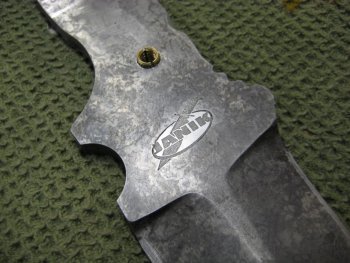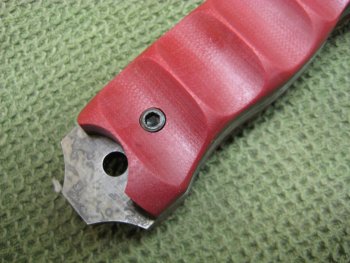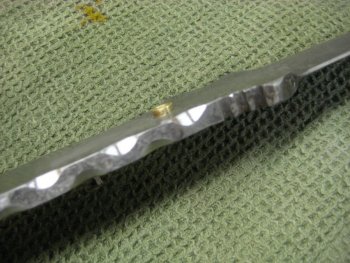I was thinking, could you not just tap the tang of the knife and avoid using the standoffs?
That method is best reserved for the rare occasion where you're not worried about the fasteners lining up. By this I mean having one hole in the tang for each screw. The screw on one side of the knife would be offset from the other side.
For having the fasteners lined up against each other (two screws sharing the same threaded hole), it would have to be a
very thick tang to get enough thread engagement.
How much room you have to play with really depends on the thickness of your tang in relation to the fineness of your threads.
But the typical thickness of a tang simply doesn't provide enough room.
Common screw sizes used for this sort of work are typically 8-32 and 4-40.
With the 8-32, that's a distance of .0313" for one thread engagement.
With the 4-40, it's .025" for one turn.
Let's say you want a minimum of two turns on each screw. You have two screws- one per side. So you multiply the distance for thread engagement times four (two screws with two turns each).
For the 8-32 screw, you need at the minimum .125", or a tang that's 1/8" thick.
For the 4-40 screw, the minimum tang thickness would drop to .100"
Those would be the minimums, and on paper it looks like you can get away with it, since we commonly work with tangs that meet that requirement.
BUT (there's always a "but") you would need to be very precise with the thickness of the scales and the length of the screws. They need to be the same length to ensure equal thread engagement, and the ends would need to be nearly perfectly square with the threads since the two screws are probably gonna butt up against each other for that minimum thread engagement.
In the end, it's a whole lot faster (and considerably easier) to use a standoff in the middle because it gives us plenty of thread engagement. Yes, we have the extra step of counterboring the inside of the scales for the standoff. But that's small potatoes compared to attempting to get exact thickness on the scales, and then getting exact screw lengths to fit flush while ensuring each screw has an equal amount of engagement in the middle.
Even if we do get lucky with that type of precision, we're really in trouble if a natural material is being used for the scales. Having two screws share the same threaded hole means tighter tolerances had to held for the minimum thread engagement, so if the scales swell then we have no room to back the screw out while maintaining thread engagement. If the scales shrink, then we have no way to tighten them up.
I understand the idea, because I tried it a long time ago (before I even knew what a standoff was).
After I spent considerable time messing up a bunch of screws, I thought to myself "There's gotta be a way to do this without becoming a machinist!"
That's when I decided to offset the screws on one side from the screws on the other side. We've all got a "wall of shame", and that knife definitely belongs on mine. But it was a quick fix for someone wanting easily replacable scales, and I didn't know at the time there was a better way. The guy liked it; I just prayed he didn't bring me another knife for the same treatment.
Rob




